Last update:
General Physics news
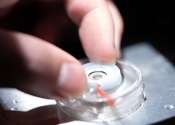
How light can vaporize water without the need for heat
It's the most fundamental of processes—the evaporation of water from the surfaces of oceans and lakes, the burning off of fog in the morning sun, and the drying of briny ponds that leaves solid salt behind. Evaporation ...
General Physics
13 hours ago
0
82

CMS Collaboration observes new all-heavy quark structures
For over a decade, the CMS Collaboration, a large team of researchers based at different institutes worldwide, has been analyzing data collected at the Compact Muon Solenoid, a general-purpose particle detector at CERN's ...

Novel method could explore gluon saturation at the future electron-ion collider
The U.S. nuclear physics community is preparing to build the electron–ion collider (EIC), a flagship facility for probing the properties of matter and the strong nuclear force that holds matter together. The EIC will allow ...
General Physics
17 hours ago
0
15
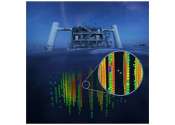
Hunting for the elusive: IceCube observes seven potential tau neutrinos
Researchers at the IceCube Neutrino Observatory in Antarctica have found seven signals that could potentially indicate tau neutrinos—which are famously hard to detect—from astrophysical objects.
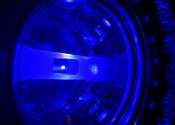
Superradiant atoms could push the boundaries of how precisely time can be measured
Superradiant atoms can help us measure time more precisely than ever. In a recent study, researchers from the University of Copenhagen present a new method for measuring the time interval, the second, mitigating some of the ...
General Physics
Apr 22, 2024
0
107
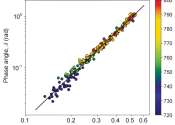
Toward a unified theory for dynamics of glassy materials
In the realm of disorder and amorphous systems, such as oxide glasses utilized in display technologies and the cryogenic preservation of biological materials, there exists a substantial body of contemporary scientific and ...
General Physics
Apr 22, 2024
0
6
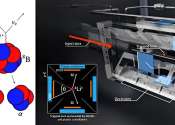
Beta-decay measurements in mirror nuclei pin down the weak nuclear force
The Standard Model of Particle Physics is scientists' best understanding of the forces that describe how subatomic particles interact. The Standard Model encompasses four forces: the strong nuclear force, the weak nuclear ...
General Physics
Apr 22, 2024
0
23

New models of Big Bang show that visible universe and invisible dark matter co-evolved
Physicists have long theorized that our universe may not be limited to what we can see. By observing gravitational forces on other galaxies, they've hypothesized the existence of "dark matter," which would be invisible to ...
General Physics
Apr 22, 2024
0
80
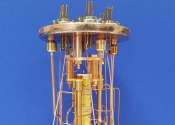
Ghost particle on the scales: Research offers more precise determination of neutrino mass
What is the mass of a neutrino at rest? This is one of the big unanswered questions in physics. Neutrinos play a central role in nature. A team led by Klaus Blaum, Director at the Max Planck Institute for Nuclear Physics ...
General Physics
Apr 19, 2024
6
175
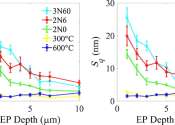
Smoother surfaces make for better accelerators
With every new particle accelerator built for research, scientists have an opportunity to push the limits of discovery. But this is only true if new particle accelerators deliver the desired performance—no small feat in ...
General Physics
Apr 18, 2024
0
48

Estimating uncertainty in atomic spectroscopy
If you repeat a measurement with the same or different instruments, you'll get slightly different numbers each time. Estimating the uncertainties associated with these numbers turns them into an informative result.
General Physics
Apr 18, 2024
0
1

First curved data link side-steps key 6G wireless challenge
Next-generation wireless signals will no longer emanate indiscriminately from a base station as is the case now but will likely take the form of targeted directional beams. However, any physical interference—an object or ...
General Physics
Apr 18, 2024
0
8
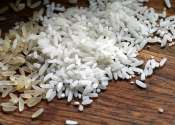
Vibrations of granular materials: Theoretical physicists shed light on an everyday scientific mystery
Coffee beans in a jar and piles of rice or sand are examples of granular matter: materials composed of large numbers of macroscopic—rather than atomic scale—particles. Although granular matter is extremely familiar in ...
General Physics
Apr 17, 2024
0
235

How logic alone may prove that time doesn't exist
Modern physics suggests time may be an illusion. Einstein's theory of relativity, for example, suggests the universe is a static, four-dimensional block that contains all of space and time simultaneously—with no special ...
General Physics
Apr 16, 2024
54
409

Physicists explain, and eliminate, unknown force dragging against water droplets on superhydrophobic surfaces
Microscopic chasms forming a sea of conical jagged peaks stipple the surface of a material called black silicon. While it's commonly found in solar cell tech, black silicon also moonlights as a tool for studying the physics ...
General Physics
Apr 16, 2024
0
23

CMS collaboration releases Higgs boson discovery data to the public
As part of its continued commitment to making its science fully open, the CMS collaboration has just publicly released the combination of CMS measurements that contributed to establishing the discovery of the Higgs boson ...
General Physics
Apr 16, 2024
0
991
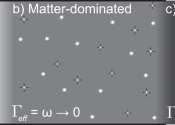
Study uses thermodynamics to describe expansion of the universe
The idea that the universe is expanding dates from almost a century ago. It was first put forward by Belgian cosmologist Georges Lemaître (1894–1966) in 1927 and confirmed observationally by American astronomer Edwin Hubble ...
General Physics
Apr 15, 2024
1
660

Machine learning could help reveal undiscovered particles within data from the Large Hadron Collider
Scientists used a neural network, a type of brain-inspired machine learning algorithm, to sift through large volumes of particle collision data. Particle physicists are tasked with mining this massive and growing store of ...
General Physics
Apr 15, 2024
0
264

ProtoDUNE's argon filling underway, a significant step toward next era of neutrino research
CERN's Neutrino Platform houses a prototype of the Deep Underground Neutrino Experiment (DUNE) known as ProtoDUNE, which is designed to test and validate the technologies that will be applied to the construction of the DUNE ...
General Physics
Apr 12, 2024
0
107

Designing a cost-effective X-ray free electron lasers facility
Many advances in structural science since the 1970s were made by probing materials with synchrotron radiation: that is, high energy X-rays generated through accelerating high-energy electrons. The latest generation of such ...
General Physics
Apr 12, 2024
0
40
More news

Evidence of a new subatomic particle observed

Searching for new asymmetry between matter and antimatter

The next-generation triggers for CERN detectors

ATLAS provides first measurement of the W-boson width at the LHC

Peter Higgs: physicist who predicted 'God particle'

FASER measures high-energy neutrino interaction strength

A physicist uses X-rays to rescue old music recordings
Other news

New evidence found for Planet 9

World's chocolate supply threatened by devastating virus

Fruit fly pest meets its evolutionary match in parasitic wasp

Understanding flow and sound through large-scale computations

'Frankenstein design' enables 3D printed neutron collimator

Romania center explores world's most powerful laser

First observation of photons-to-taus in proton–proton collisions












































